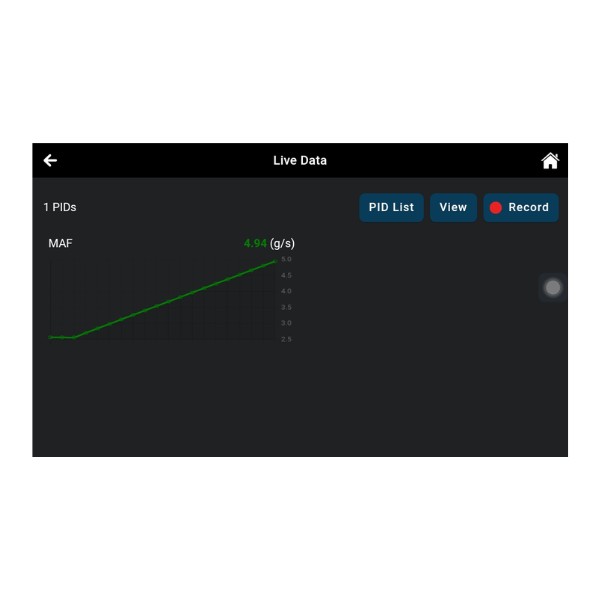The Mass Air Flow (MAF) sensor plays a crucial role in your vehicle’s performance. It measures the amount of air entering the engine, allowing the Engine Control Unit (ECU) to calculate the correct fuel-to-air ratio for optimal combustion. A faulty MAF sensor can lead to various performance issues. This guide will show you how to test your MAF sensor using a simple method.
Understanding the MAF Sensor and its Importance
The MAF sensor is located in the intake tract between the air filter and the throttle body. It uses a heated wire or film to measure the airflow. As air passes over the heated element, it cools down. The amount of current required to maintain the element’s temperature is directly proportional to the airflow. This data is sent to the ECU, which uses it to adjust fuel injection and ignition timing.
How to Test MAF Sensor with an OBD2 Scanner
Testing your MAF sensor can be done quickly and efficiently using an OBD2 scanner, such as the Innova 7110. This tool allows you to monitor live data from various sensors, including the MAF. Here’s a step-by-step guide on How To Test Maf sensor performance:
Step 1: Connect the OBD2 Scanner
Plug the OBD2 scanner into the diagnostic port located under the dashboard, usually on the driver’s side.
Step 2: Access Live Data
Turn on the ignition but do not start the engine. Navigate through the scanner’s menu to find the “Live Data” or “Data Stream” option.
Step 3: Locate MAF Sensor Readings
Find the parameter labeled “MAF,” “Air Flow Rate,” or a similar designation representing the MAF sensor readings. The units are typically grams per second (g/s).
Step 4: Monitor Readings at Idle
With the engine idling, observe the MAF sensor readings. A typical range for a properly functioning sensor at idle is between 2 to 7 g/s. This value can vary slightly depending on engine size and displacement.
Step 5: Monitor Readings at Higher RPM
Gradually increase the engine speed by pressing the accelerator pedal. The MAF sensor readings should increase proportionally with the engine speed. At 2500 RPM, the readings should typically fall between 15 to 25 g/s, again depending on the engine. Observe the readings at various RPM levels. A healthy MAF sensor will show a smooth and consistent increase in airflow readings as engine speed increases.
Interpreting the Results: What to Look For
- Low Readings: Consistently low readings at all RPM levels could indicate a clogged air filter, vacuum leaks, or a failing MAF sensor.
- High Readings: Unusually high readings might suggest a vacuum leak downstream of the MAF sensor.
- Erratic Readings: Fluctuating or inconsistent readings point towards a potential problem with the MAF sensor itself, such as a dirty or damaged sensing element.
- No Readings: If the scanner displays zero or no readings, the MAF sensor might be completely faulty or there might be a wiring issue.
Conclusion: Next Steps After Testing
If your MAF sensor test reveals abnormal readings, the next step is to inspect the sensor for dirt or damage. Cleaning the MAF sensor with a specialized MAF sensor cleaner can sometimes resolve the issue. However, if cleaning doesn’t help, replacement might be necessary. Consult a qualified mechanic for further diagnosis and repair if you’re unsure about proceeding. A properly functioning MAF sensor is essential for optimal engine performance and fuel efficiency.


